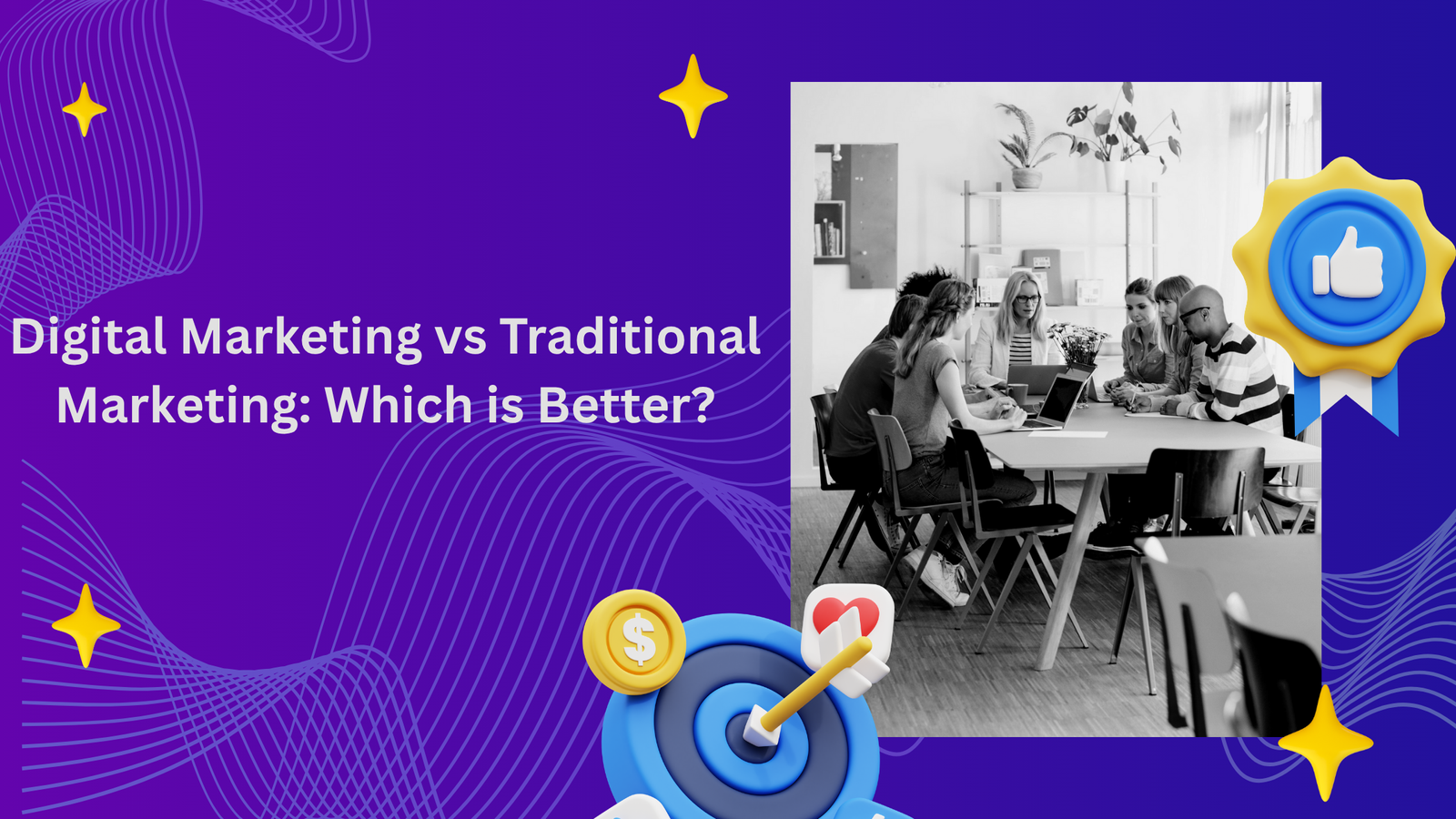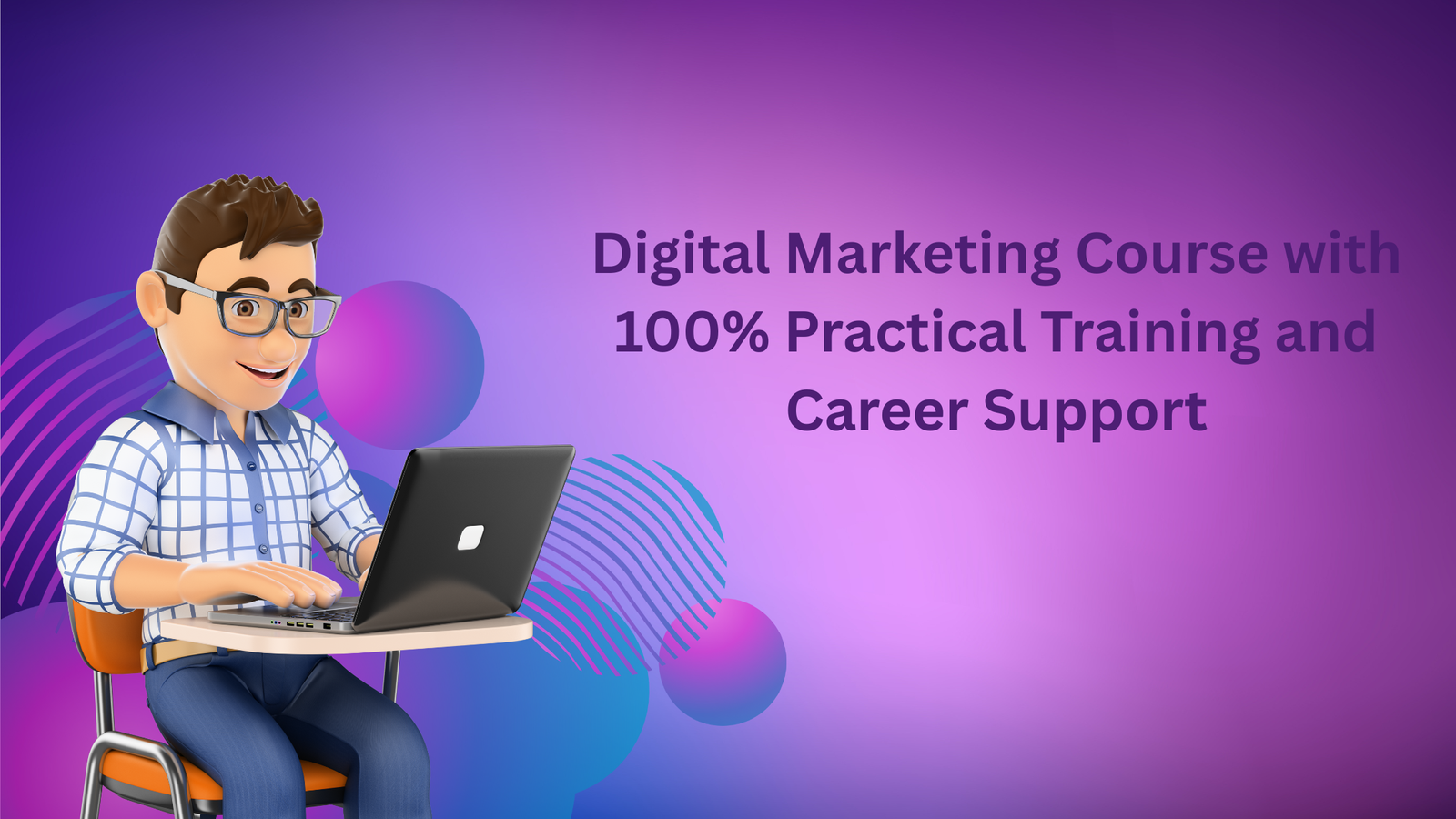Marketing has always been the backbone of every successful business. It’s how brands connect with their customers, promote products, and build lasting relationships. But with the rise of technology and the internet, the marketing world has transformed dramatically. Today, every business faces one major question — should they focus on digital marketing or traditional marketing?
While both strategies aim to attract customers and drive sales, the methods, costs, and effectiveness differ greatly. To make the right choice for your business or career, it’s essential to understand what each approach offers and how they compare.
In this article, we’ll take a deep dive into digital marketing vs traditional marketing, their advantages, disadvantages, and which one might be better for your goals.
What is Traditional Marketing?
Traditional marketing refers to all marketing activities that do not involve the internet. It includes the conventional channels businesses have used for decades to reach customers. These include:
- Television and Radio Ads – Commercials that reach large audiences.
- Print Advertising – Newspapers, magazines, and brochures.
- Billboards and Hoardings – Large outdoor displays for brand awareness.
- Direct Mail – Flyers, postcards, or catalogs sent to potential customers.
- Telemarketing – Promotional calls to targeted audiences.
- Events and Sponsorships – On-ground promotional activities.
Traditional marketing relies on mass communication — reaching as many people as possible to spread awareness about a brand or product.
What is Digital Marketing?
Digital marketing uses online platforms and digital technologies to promote products and services. It allows businesses to connect with potential customers via the internet, where most people spend their time today.
The main types of digital marketing include:
- Search Engine Optimization (SEO) – Optimizing websites to rank on Google.
- Social Media Marketing – Promoting on platforms like Instagram, Facebook, and LinkedIn.
- Pay-Per-Click Advertising (PPC) – Running paid ads on search engines or social media.
- Email Marketing – Sending promotional or informative emails to subscribers.
- Content Marketing – Creating blogs, videos, and infographics to educate and attract audiences.
- Affiliate and Influencer Marketing – Collaborating with partners or influencers to promote products.
Digital marketing focuses on targeted communication — reaching the right audience at the right time with measurable results.
Key Differences Between Traditional Marketing and Digital Marketing
Let’s compare both on the most important aspects of marketing:
| Aspect | Traditional Marketing | Digital Marketing |
| Medium | Offline (TV, print, radio, billboards) | Online (social media, search engines, websites) |
| Reach | Local or regional | Global |
| Targeting | Broad and less specific | Highly targeted and personalized |
| Cost | High production and distribution costs | Cost-effective and scalable |
| Tracking Results | Difficult to measure ROI | Easy to track with analytics |
| Interaction | One-way communication | Two-way engagement |
| Speed | Slow and time-consuming | Fast and real-time |
| Flexibility | Hard to modify after publishing | Can be changed anytime |
| Examples | Newspaper ads, TV commercials | Google Ads, Instagram campaigns |
As this table shows, digital marketing provides greater flexibility, affordability, and measurability compared to traditional marketing, which is often more expensive and less targeted.
Advantages of Traditional Marketing
Despite the growth of digital marketing, traditional marketing still has a strong presence. Here are its top advantages:
1. High Local Reach
For local businesses, traditional marketing methods like newspaper ads, flyers, or radio promotions work effectively to reach nearby customers.
2. Tangibility
Physical advertisements like brochures, posters, or billboards create a strong visual impact that audiences can remember for a long time.
3. Trust and Familiarity
Older generations tend to trust traditional marketing more since they’ve grown up seeing TV commercials and newspaper ads.
4. Effective for Mass Audiences
TV or radio commercials can reach millions at once, making them ideal for brand awareness campaigns.
Disadvantages of Traditional Marketing
While it has its strengths, traditional marketing also comes with certain limitations:
1. High Costs
Running TV or print ads is expensive. For small businesses, the cost of production and distribution can be a major challenge.
2. Limited Tracking
It’s difficult to measure how many people saw your ad or how many took action after seeing it.
3. Lack of Interaction
Traditional marketing is one-way communication — you speak to the audience, not with them.
4. Time-Consuming
Creating and publishing print or TV ads takes more time than launching an online campaign.
Advantages of Digital Marketing
Digital marketing has revolutionized how businesses promote their products. Here’s why it’s so effective:
1. Cost-Effective
You can start digital campaigns with any budget. Even small businesses can run successful ad campaigns online without spending huge amounts.
2. Global Reach
Unlike traditional marketing, which is limited geographically, digital marketing allows you to target customers worldwide.
3. Measurable Results
With tools like Google Analytics and Facebook Insights, you can track engagement, traffic, and conversions in real-time.
4. Precise Targeting
Digital marketing lets you define your audience by age, location, gender, interests, and more. This ensures your campaigns reach the right people.
5. Interactive and Engaging
Through comments, likes, shares, and feedback, customers can engage directly with brands — something traditional marketing can’t offer.
6. Real-Time Adjustments
You can pause, modify, or optimize campaigns instantly based on performance metrics.
Disadvantages of Digital Marketing
While it’s powerful, digital marketing also has challenges:
- Requires consistent effort and content creation.
- High competition online can make it difficult to stand out.
- Algorithms and trends change frequently.
- Some people (especially in rural areas) still prefer traditional marketing channels.
Which One Should You Choose: Digital or Traditional Marketing?
The answer depends on your goals, target audience, and budget.
- If you want to reach a local audience quickly, traditional marketing methods like flyers, radio, or local newspapers work well.
- But if your goal is to reach a global or tech-savvy audience, digital marketing is the better choice.
In most cases, businesses today use a combination of both — called an integrated marketing strategy.
For example:
- A brand may run a TV ad (traditional) and direct viewers to their website or social media (digital).
- Event promotions might include physical banners along with Instagram ads.
This hybrid approach ensures maximum reach and engagement.
The Future of Marketing
The future is undoubtedly digital. With smartphones, social media, and online shopping dominating everyday life, companies are investing heavily in digital campaigns.
However, traditional marketing will continue to exist — especially for industries where physical presence still matters, like real estate, education, or local services.
The ideal strategy for any business is to combine both worlds — use digital marketing for performance and traditional marketing for brand trust.
Conclusion
So, digital marketing vs traditional marketing — which is better?
While traditional marketing still has its strengths in brand awareness and local reach, digital marketing offers far greater control, flexibility, and measurable results.
The modern customer is online — researching, comparing, and purchasing products digitally. Hence, businesses that fail to adopt digital marketing risk losing a major portion of their audience.
In the end, it’s not about choosing one over the other. The real power lies in understanding how to blend both effectively to create an impactful marketing strategy that grows your business and builds lasting customer relationships.















